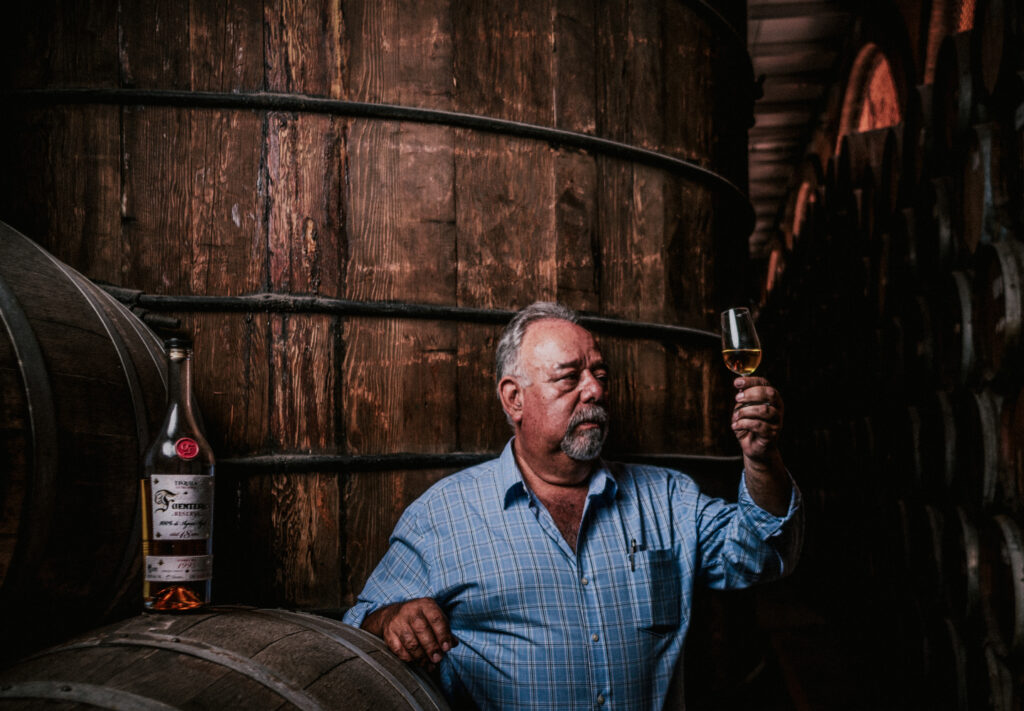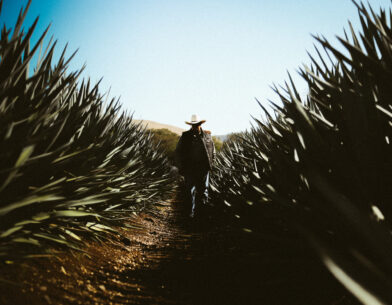Tequila is a distilled alcoholic beverage that is made from the blue agave plant, which is primarily grown in the Jalisco state of Mexico. Making tequila begins with harvesting the agave plant, which is then cooked in an oven to convert its starches into sugars.
The cooked agave is then crushed to extract its juice, and fermented using yeast to produce alcohol. The resulting liquid is then distilled to remove impurities and increase its alcohol content.
There are two main types of tequila: 100% agave tequila and mixto tequila.100% agave tequila is made solely from the blue agave plant, while mixto tequila is made from a combination of agave and other sugars.
The aging process also plays a significant role in the production of tequila. Blanco tequila is unaged and has a clear color, while reposado tequila is aged for at least two months in oak barrels, giving it a light golden color and a smoother taste. Añejo tequila is aged for a minimum of one year in oak barrels, resulting in a darker color and a more complex flavor profile.
In conclusion, tequila is made from the blue agave plant, which is cooked, crushed, fermented, and distilled to produce an alcoholic beverage. The type of tequila and its flavor profile are determined by the aging process and the use of other sugars in the production process.
What is the process of making tequila?
Making tequila is a complex process that involves several steps. First, the agave plant is harvested and the leaves are removed. The heart of the plant, called the piña, is then cooked in an oven or autoclave to convert the starches into sugars. The cooked piñas are then mashed and the juice is extracted.<br><br> The juice is then fermented with yeast to create a low-alcohol liquid. This liquid is then distilled twice to create the tequila. The tequila is then aged in oak barrels for at least two months, although some tequilas are aged up to three years.
After aging, the tequila is blended with other tequilas to create the desired flavor profile. Finally, the tequila is bottled and ready to be enjoyed. Making tequila is a lengthy process that requires skill and patience, but the end result is a delicious and unique spirit.
How is the blue agave used to make tequila?
The blue agave is a key ingredient in the production of tequila. It is a succulent plant native to Mexico and is the only agave used to make tequila. The blue agave is harvested, and the heart of the plant, known as the piña, is removed. The piña is then cooked, usually in an oven, to break down the complex carbohydrates into simple sugars.
The cooked piña is then mashed, and the juice is extracted. The juice is then fermented and distilled to create tequila. The blue agave is also used to make other agave-based spirits, such as mezcal and stool.
The Blue agave is an important part of the tequila-making process, as it provides the unique flavor and aroma that makes tequila so distinctive. Without the blue agave, tequila would not be the same.
What determines the type of tequila?
The type of tequila is determined by the amount of time it has been aged and the type of agave used to make it. Tequila is made from the blue agave plant native to Mexico. The two main types of tequila are blanco and reposado. Blanco tequila is unaged and bottled immediately after distillation.
It has a clear color and a strong, earthy flavor. Reposado tequila is aged for at least two months in oak barrels, giving it a golden color and a smoother, more complex flavor. Añejo tequila is aged in oak barrels for at least one year, giving it a dark color and a more intense flavor.
Extra añejo tequila is aged for at least three years in oak barrels, giving it a deep amber color and a rich, complex flavor. The type of tequila you choose will depend on your personal preference and the occasion. Blanco tequila is best for cocktails, while reposado and añejo tequilas are best for sipping.
How does aging affect tequila’s flavor?
Aging affects tequila’s flavor in a variety of ways. As tequila ages, the flavor profile changes and develops more complexity. The aging process also helps to mellow out the harshness of the alcohol, making it smoother and more enjoyable to drink. The longer tequila is aged, the more intense the flavor becomes.
Aged tequila has a more robust flavor with oak, caramel, and vanilla notes. The aging process also helps to bring out the natural sweetness of the agave, making it more palatable. Additionally, aging can help to reduce the amount of alcohol in tequila, making it less harsh and more enjoyable to drink.
These factors combine to create a unique flavor profile that can only be achieved through aging. Ultimately, aging tequila can help to create a more complex and enjoyable flavor profile that can’t be achieved with unaged tequila.
What other sugars are used in tequila production?
When it comes to tequila production, a variety of sugars are used to create the unique flavor and aroma of the spirit. The most common sugar used is agave, which is derived from the agave plant. This sugar is used to ferment the tequila and flavor it.
Other sugars used in tequila production include cane sugar, honey, and molasses. Cane sugar is derived from sugar cane and is used to sweeten the tequila. Honey is also used to sweeten the tequila and give it a unique flavor. Molasses is a by-product of sugar production and is used to add a unique flavor to the tequila.
All of these sugars are combined to create tequila’s unique flavor and aroma. In addition to these sugars, some tequila producers also use other ingredients such as fruits, herbs, and spices to create unique flavors and aromas. No matter what type of sugar is used, it is important to ensure that the tequila is properly fermented and aged to create the best flavor and aroma.

